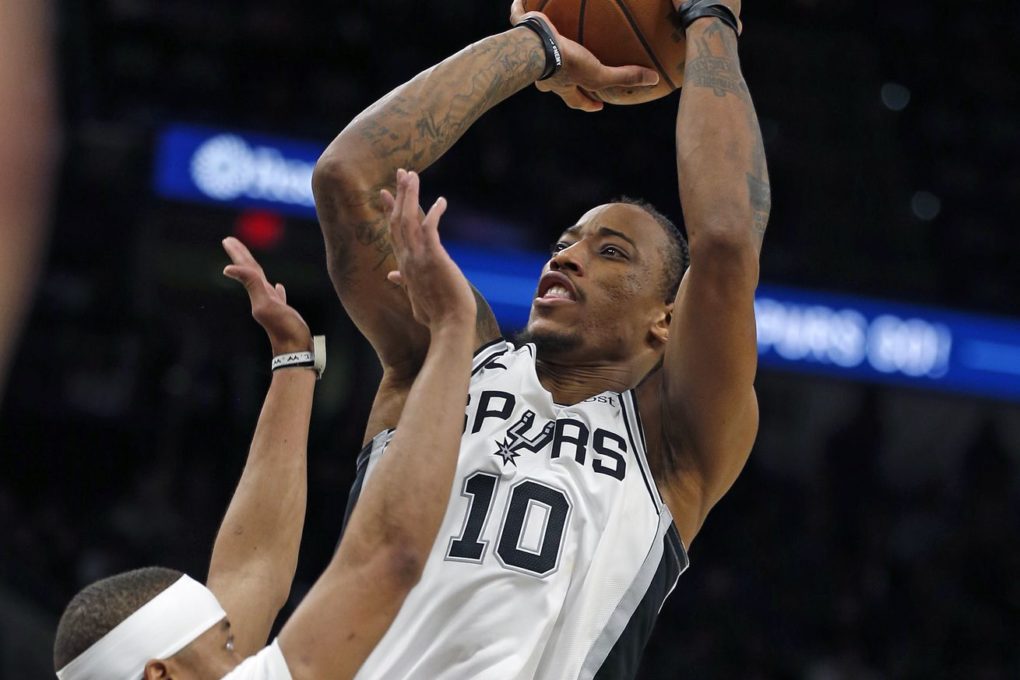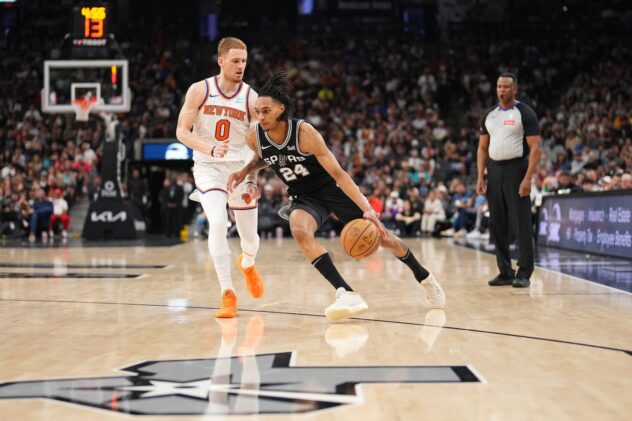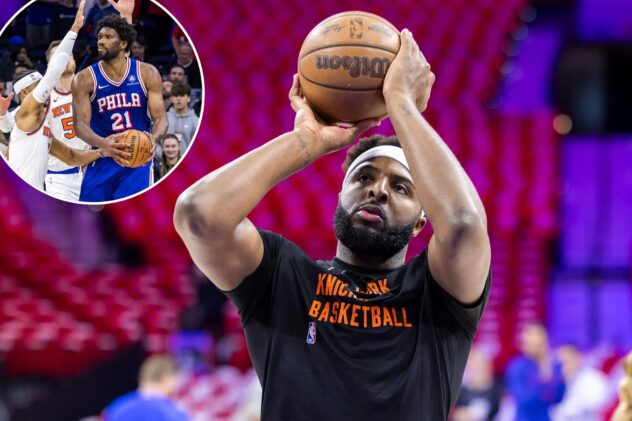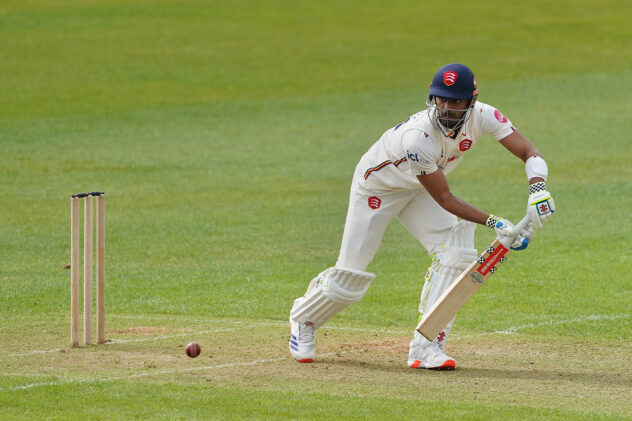The Spurs showed improvement against the Pistons’ zone defense

Photo by Ronald Cortes/Getty Images
They weren’t perfect, but the Spurs showed improvement in attacking zone defenses against Detroit.
The Spurs have habitually struggled against zone defenses. Just a week ago, the Clippers forced the Silver and Black into 18 turnovers by mixing in an active zone with their already formidable man-to-man scheme en route to a blowout victory in San Antonio. But against the Pistons on Saturday, the Spurs showed much quicker recognition of that type of defensive adjustment, adapting their attack on the fly to exploit its gaps and seams.
When the Pistons switched into their zone on a sideline out-of-bounds play with 3:40 to go in the 2nd quarter, the Spurs quickly transitioned out of an attempted post up for LaMarcus Aldridge on the left block.
Once Bryn Forbes realizes that LaMarcus is already double teamed, he swings the ball back up top to DeMar DeRozan. Dejounte Murray cuts in to the free throw line, drawing Andre Drummond up to guard him, but with only 6 seconds remaining on the shot clock, DeMar chooses to attack Tim Frazier in isolation rather than try to take advantage of the mismatch LaMarcus has down low.
Dejounte clears out, giving DeMar room to back Frazier down into the paint before turning into a 10 foot jumper. It’s not great offense, but one of the easier ways to attack a zone is to put the best offensive player in the zone of a weaker defender, which is exactly what happens here.
The Spurs used decent ball and player movement on the next half court possession to get DeMar the ball in the corner with Christian Wood closing out.
DeMar’s pass to Dejounte on the opposite wing gives the Spurs a numbers advantage on the right side of the floor. When Tony Snell, who is the top defender, moves over to pick up Dejounte, the Spurs have a 4-on-3 on the back side. Exploiting that advantage requires just two quick passes.
/cdn.vox-cdn.com/uploads/chorus_asset/file/19563086/zoneOff2.gif)
Drummond has to pick up LaMarcus at the free throw line, and Frazier is concerned with Bryn, so that leaves Wood to check both Trey Lyles under the rim and DeMar in the right corner. He makes the right decision to shade towards Trey and force the kick out to DeMar, who definitely should have attacked the close out instead of firing up a long two.
Even better, rather than moving to the corner, DeMar should have cut across Wood’s face when LaMarcus caught the ball while Trey took position in the corner. Assuming Wood stayed with DeMar in that scenario, the Spurs would have had Trey taking the corner three, a much better result.
The Spurs missed out on an even better opportunity on the next play.
When Dejounte swings the ball to DeMar on the left wing, Bryn sprints down to the baseline and out to the left corner. The top of the Pistons zone is slow to react, leaving him wide open in the left corner. But DeMar sees that Drummond has dropped to defend Trey on the left block, so he hits LaMarcus, who is momentarily open in the paint. Instead of an open corner three, they get a contested 14-footer.
None of these plays represent the combination of crisp movement and decision making that can break even the best zone schemes, which, to be kind, is not an apt description of the Pistons’ defense. But compared to the Spurs’ previous efforts, they all show progress. The quick adjustment into zone offense and the coordinated movements that followed created the kind of openings that should lead to easy buckets. As the decision making catches up with the ball and player movement, efficient scoring will follow.
The Spurs showed improvement against the Pistons’ zone defense
The Spurs showed improvement against the Pistons’ zone defense
















